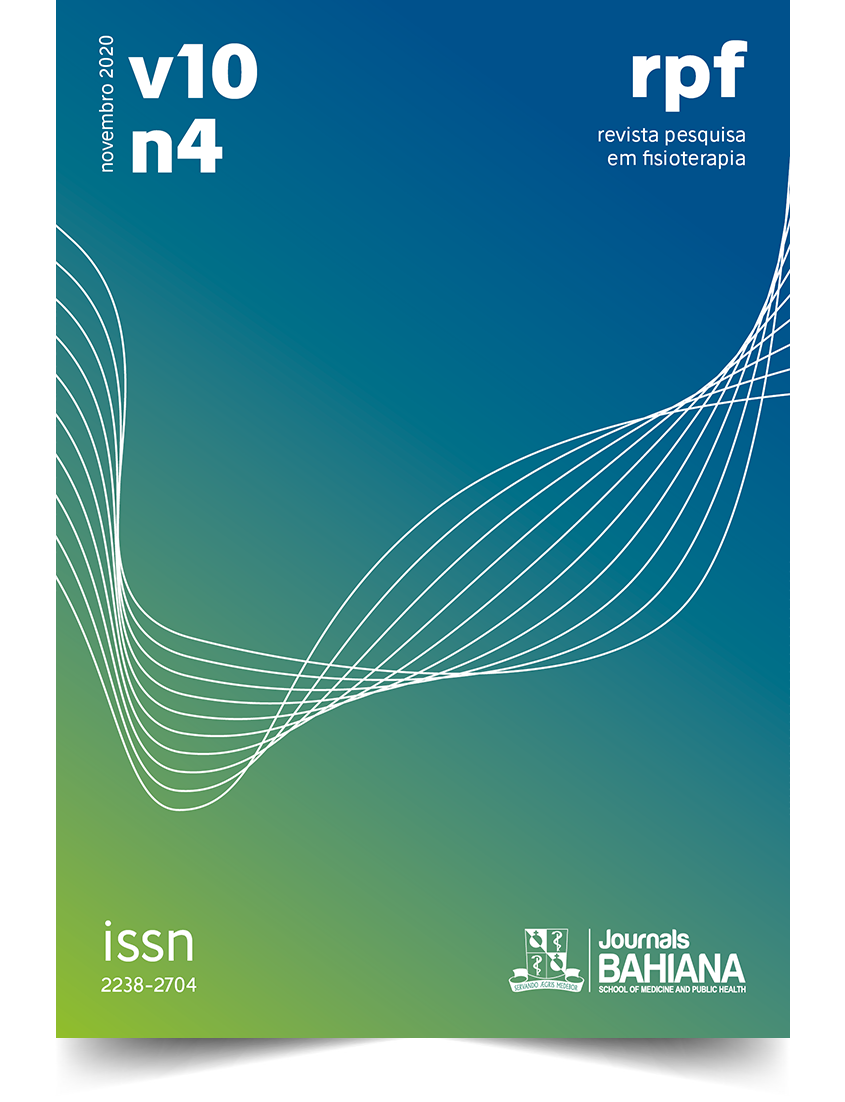Efeitos da fisioterapia na incontinência urinária feminina
DOI:
https://doi.org/10.17267/2238-2704rpf.v10i4.3260Palavras-chave:
Incontinência urinária. Fisioterapia. Eletroestimulação. Estimulação elétrica. Incontinência urinária de esforço.Resumo
INTRODUÇÃO: A incontinência urinaria é definida como qualquer perda involuntária de urina, sendo o sexo feminino o mais atingido. É classificada em três tipos: de esforço, de urgência e mista. A fisioterapia no tratamento de incontinência urinária consiste na normalização do tônus dos músculos do assoalho pélvico, utilizando cinesioterapia e eletroestimulação transcutânea do nervo tibial posterior. OBJETIVO: Avaliar os efeitos da fisioterapia na incontinência urinária feminina. METODOLOGIA: Tratou-se de uma pesquisa clínica, longitudinal e prospectiva. Participaram do estudo 27 mulheres com idade média de 57,4 anos, com diagnóstico de incontinência urinária, encaminhadas para tratamento em Ambulatório de Fisioterapia Escola. As mesmas responderam um questionário de avaliação dos dados demográficos e clínicos e o questionário de qualidade de vida ICIQ-FS, antes e após intervenção fisioterapêutica por meio de cinesioterapia e eletroestimulação tibial posterior. RESULTADOS: A maioria das mulheres possuía incontinência urinária de esforço (55,6%), sendo que 33,3 % (n=9) referiram perdas urinárias de 01 a 04 anos e 33,3 % (n=9) de 04 a 08 anos. A frequência de perdas urinárias antes do tratamento na maioria (55,6%) era diversas vezes ao dia e após o tratamento a maioria (55,6%) perdia uma vez por semana ou menos. Houve diminuição significativa na comparação do ICIQ Score antes e após o tratamento fisioterapêutico (p< 0.0001). CONCLUSÃO: A fisioterapia, por meio de cinesioterapia e eletroestimulação, é eficaz no tratamento da Incontinência Urinária feminina.



